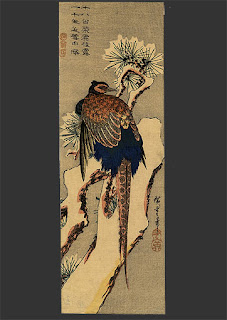With the responsibility of taking game comes the responsibility of creating a masterpiece with it. While it seems these skills improve with age, and bird camp experience, there is always someone who draws the line at doing little more than opening a canned cream of mushroom soup and a bag of onion bits. Coupled with the need for a forgotten appetizer, a culinary whiz in camp is always more than welcomed.
Of course we all want our game birds to be picturesque center pieces, but let's not forget they make great apps, and snacks too. As a frequent traveler to Japan, and a lover of Asian food, I've found a series of treatments not only suitable for game birds, but pleasing to the American palate too. One of the foods I've adapted is a fried chicken recipe, suitable for either a main dish or an appetizer, called Tatsuta Age (Tah-Tsu-Tah Ah-Gay), but this recipe will work with any white breasted game bird. In Japanese, Pheasant is called Kiji (Kee Jee), so I call this dish, Kiji Tatsuta.
Tastuta is a dish in which bite sized pieces of chicken are marinated in some basic ingredients, and deep fried to deliciousness. The simplicity of this dish, coupled with the familiarity of deep frying make this dish an easy primer for anyone interested in expanding the flavor profiles of their cooking, and is sure to impress the guys; whether served at hunting camp, or while watching a football game. In addition, two of the ingredients are a staple I use in treating any bird I take that might be hard hit and suffering a little rankness from blood trapped in the meat.
To start you'll need to take a trip down the international aisle at the grocery store for a couple of provisions, and then detour to the produce section, before venturing into the kitchen. To start with, find yourself a bottle of soy sauce, and a small bottle of cooking sake. Cooking sake is a very low alcohol content rice wine, and should be available at any large grocery store. Should you not find it, any inexpensive bottle of sake from the liquor store will do. I like to keep a large bottle on hand, as it comes in handy for other game handling applications, which I'll explain later. From the produce aisle you'll need some scallions, and a roughly one inch long piece of ginger root. In addition you'll need to get some oil for frying and some flour, if you don't have it already.
Taking a look at our ingredients, here's what you should have assembled when it's time to start cooking:
The breast meat of two pheasant. Cut into bite sized chunks
Soy sauce
Cooking sake, or regular sake
Ginger root, roughly one inch in size
Scallions
Flour
Oil
Assembling this dish is quite easy. Put two parts sake, and one part soy sauce in a bowl suitable for marinating. About 2/3 cup of sake, and 1/3 cup of soy sauce should be enough. Finely chop two scallions, and add to the soy/sake mixture. Next, grate the ginger, retaining any liquid, and add about one tablespoon to the mixture. Ginger can be grated with a small, fine cheese grater, or chopped finely if you have the knife skills. Before grating, you can quickly remove the paper-like skin of the ginger by scraping it off with the edge of a spoon, or you can include it in the dish. After you've assembled, and mixed your marinade, submerse the meat and refrigerate for a couple of hours. When it's time to cook, simply pull a couple chunks of meat from the marinade, allowing bits of scallion and ginger to adhered to it, dredge it in flour, and carefully drop it in the hot oil you've heated until it's fried golden brown.
In addition, sake is a great treatment for hard hit birds. On occasion, I find that I may have a bird in my fridge, that either from being hard hit, or suffering from a poor diet, has a bit of a rank odor to it. Simply marinating a bird such as this in sake, and a couple 1/4 inch thick rounds of ginger easily removes any unwanted essence, without impacting the flavor.
Bon appetite.
Bon appetite.
This is an article I thought was going to be publish, and maybe it will yet. After several issues of the publication going out without it, however, I thought it was time to share it.




that looks quite tasty!! You got a new follower
ReplyDelete